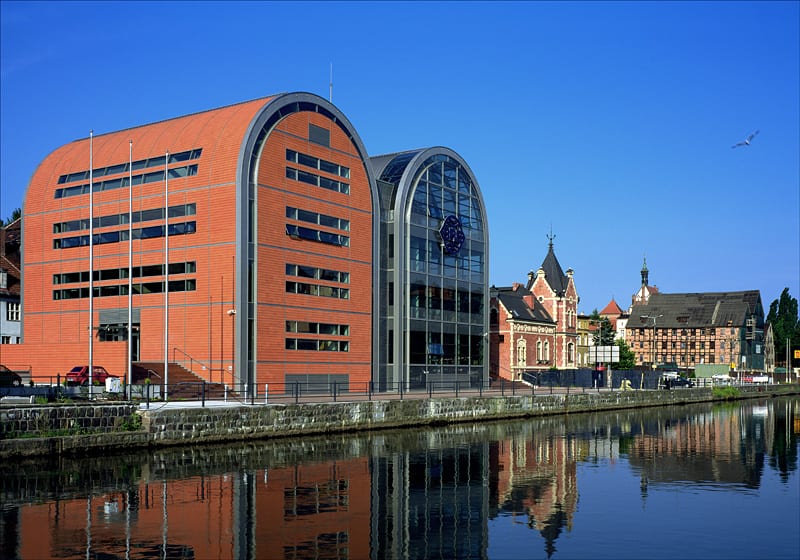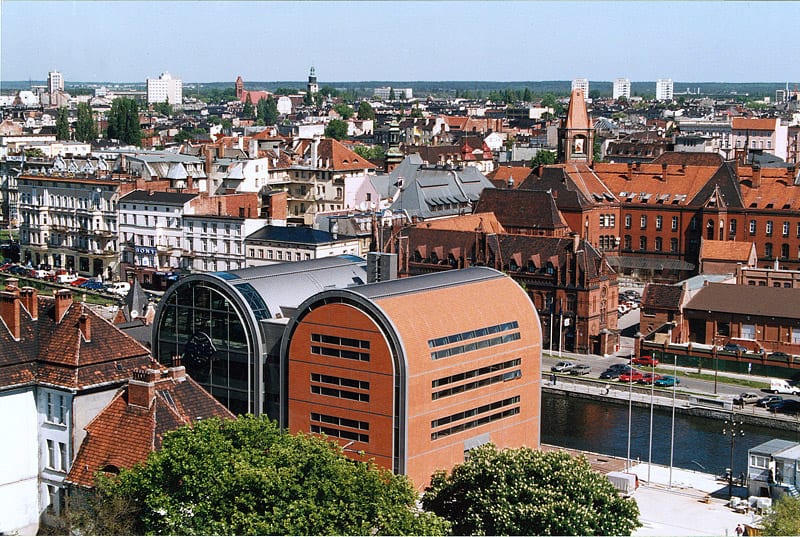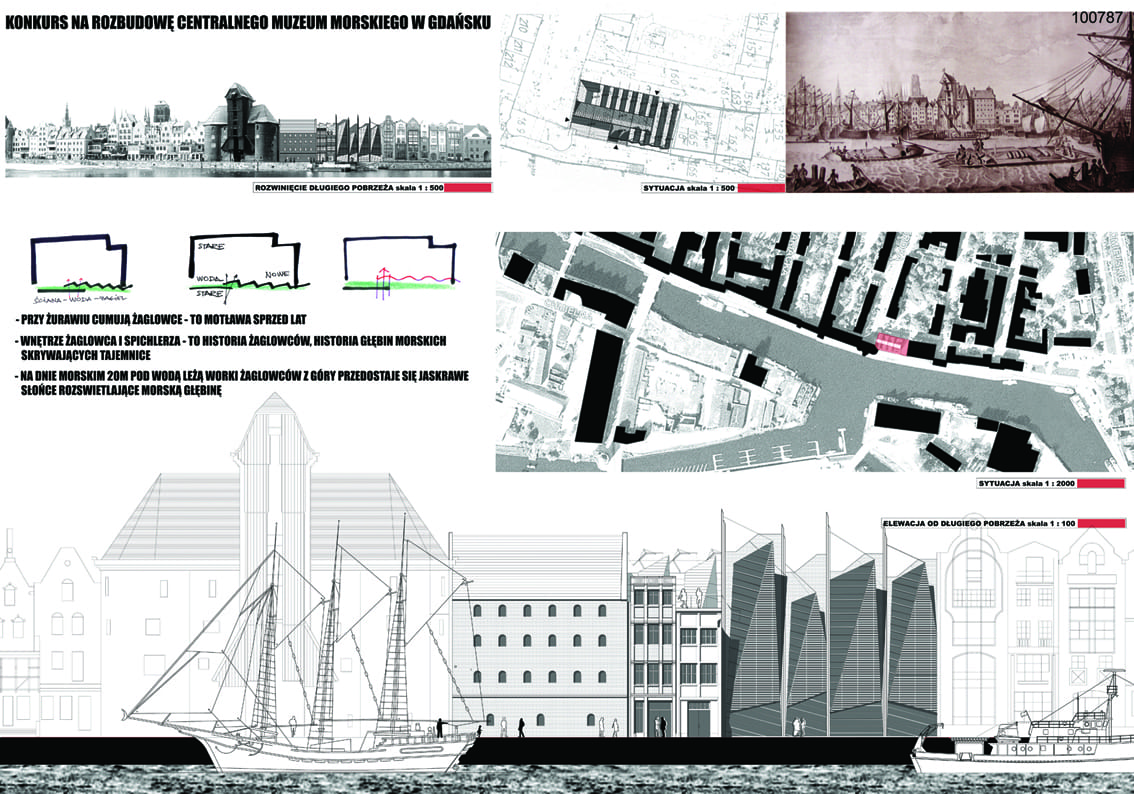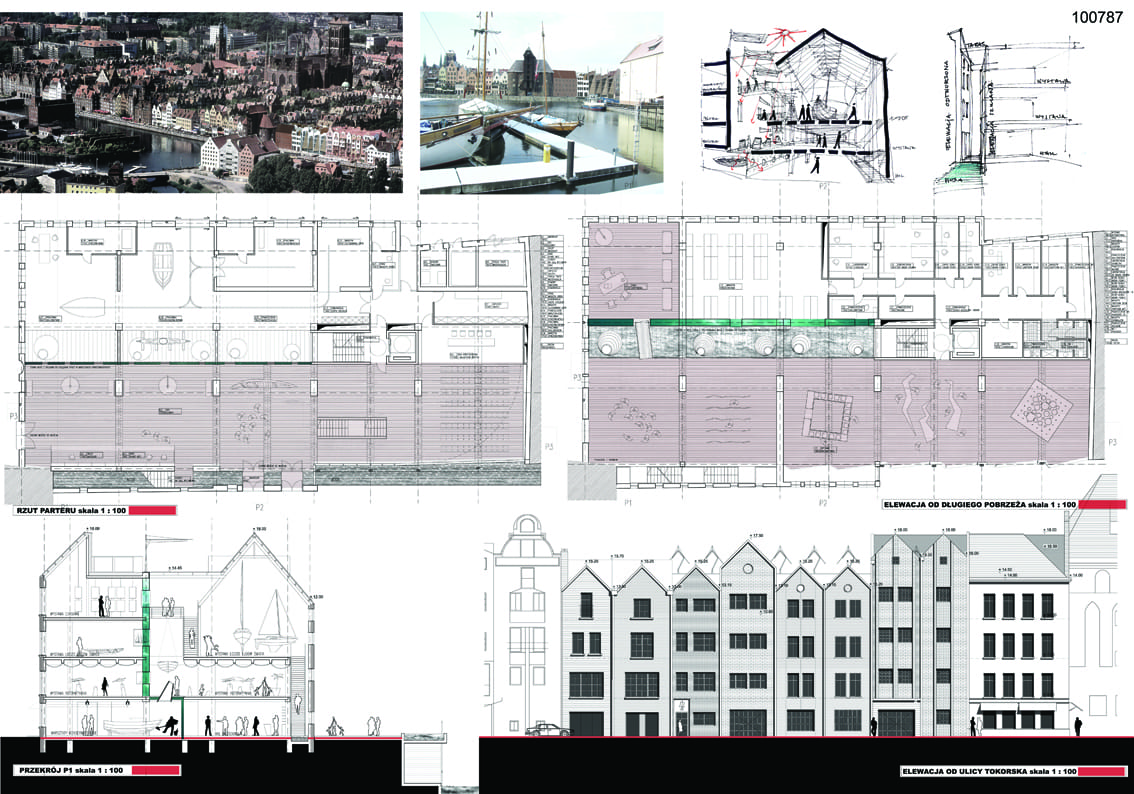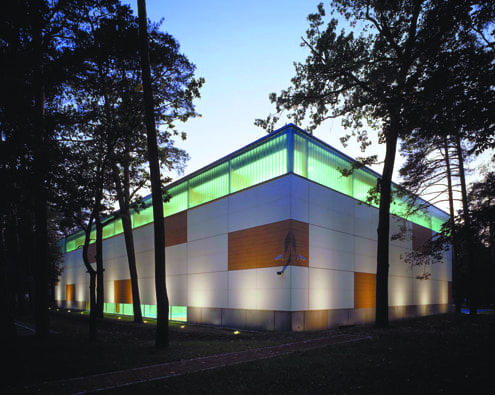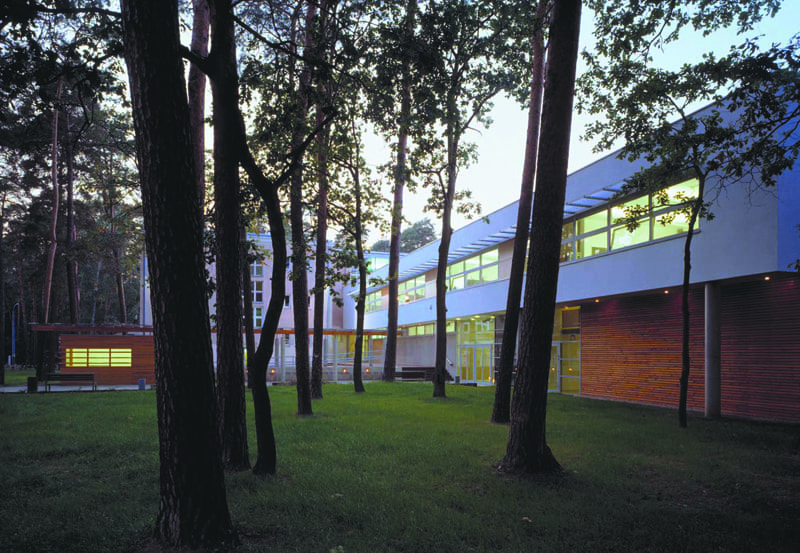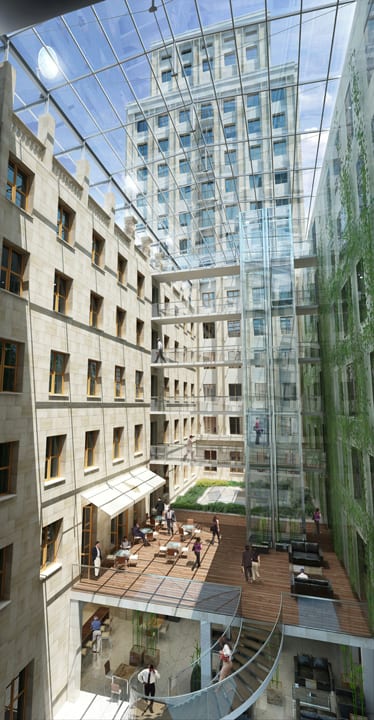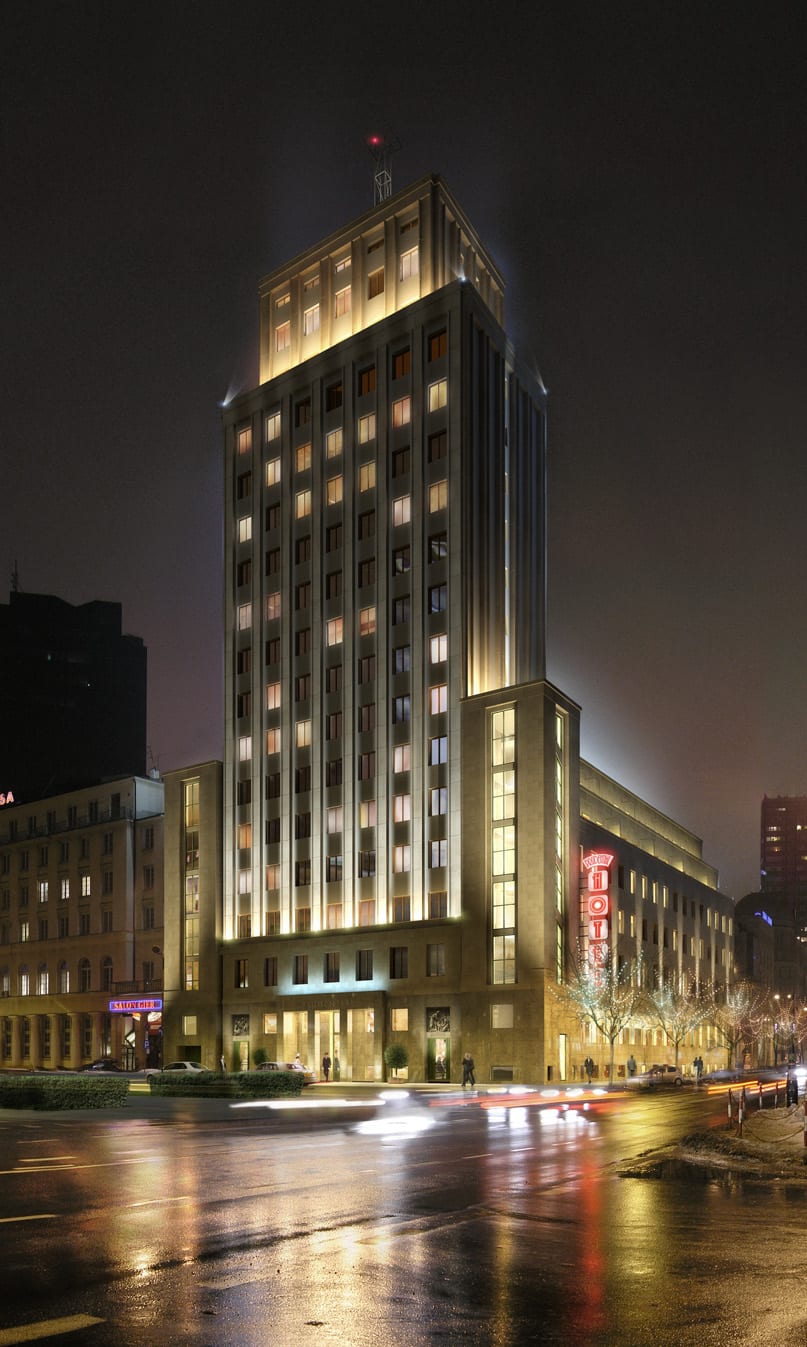|
|
COMPETITIONS: When did you decide you wanted to become an architect, and who were some of the main influences for you?
Andrzej Bulanda: I have been thinking about architecture for a long time, although I didn’t start in architecture. There was some family history and I was always interested in this type of work. Also, in those days in Poland, it was the only profession in which you could frame your own (non-political) agenda, and not have to be part of a large office. You could do small competitions, small projects.
I spent one year at GSD as a Visiting Scholar and wrote a book which was an interview with professor Jerzy Sołtan concerning his personal history with Le Corbusier, everything related to architecture, and the roots of his own life. From GSD Harvard, I got my position at Penn State University, where i taught for a year. Then I came back to Europe, to France, where I was working with Groupe 6 in Grenoble for two years on projects related to health and culture. In 1991, I started the firm here in Poland with my partner — we had met at the university in Warsaw.
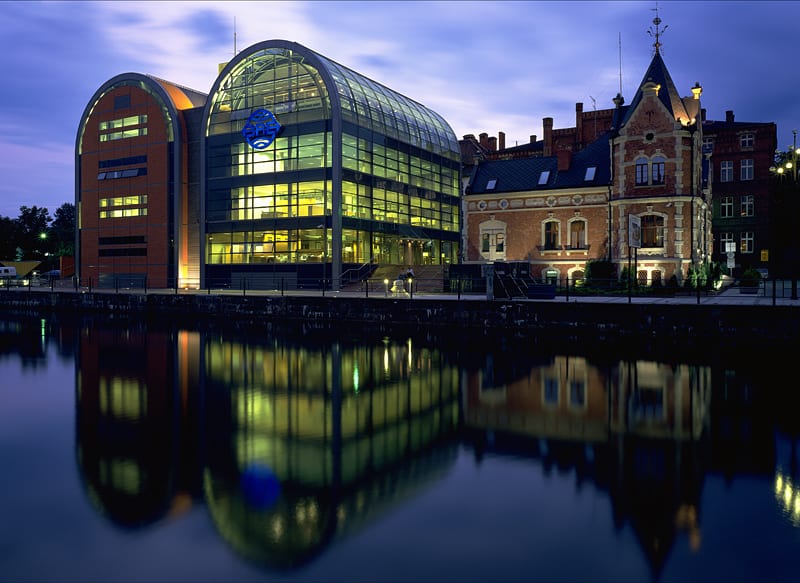
COMPETITIONS: When you were working in France, those were the days when a lot of open competitions were being staged.
AB: In fact we won one of those competitions; it was for a museum in Grenoble. It was an art and history museum located within the existing walls of the city: it was about the new-and-old relationship between the two.
COMPETITIONS: And this was with the French firm?
AB: Yes, later Groupe 6 created a team with BDP, a huge British company which then opened an office in Paris. As a matter of fact we did the national competition for the Warsaw Center fifteen years ago with them.
COMPETITIONS: The Jewish History Museum competition in Warsaw focused attention on architecture in Poland. But competitions have been occurring here for some time. When did they really begin to become widespread?
AB: I think it was the mid-nineties. Initially, the local market began to expand. After this international competition surrounding the Palace of Culture, the Jewish Museum Competition was the first big international competition organized in a different manner, since it was a two-stage competition with a serious international jury.
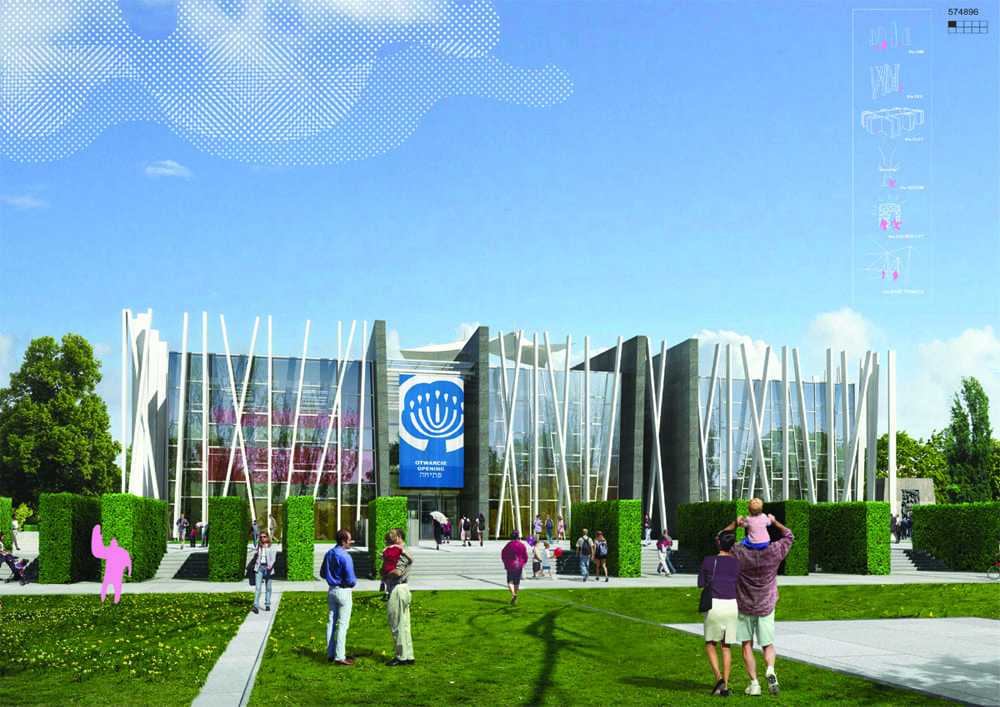
Polish Museum of Jewish History, finalist with Centralia Group (Competition 2005)
COMPETITIONS: What effect did the change in the political climate have on competitions and architecture in Poland in general?
AB: Till 1989 architecture in Poland was a “state oriented” profession with big offices owned by state companies — no freedom of expression was allowed and the profession reflected a certain anonymity. The main and only Client was the state. So architecture was deprived of one of its main roles — individuality — and a client. Architecture changed as a profession with the emergence of a new market. Competitions became an integral part of the market process. In some areas like public works it became the sole instrument of selecting the project — and an architect. After 50 years of a broken tradition, the profession reverted to its previous, pre-war condition.

COMPETITIONS: Now that Poland is in the EU, architecture here is now subject to globalization, at least in theory. I notice that most competitions in Poland require Polish as the language of use. This is not uncommon in the EU; but it does limit participation of non-Polish architects, since Polish is not in use internationally as much as English, French or German. On the one hand it gives Polish architects an added advantage, but also limits dialogue with architects outside of Poland. Is there any chance this will change?
AB: From what I know, many competitions are bilingual; that is, the negotiations are done in English, but the final version of the project has to be done in Polish. On the other hand, many competitions are sponsored by local investors and are local administrative projects. As for the results of those important competitions, some were won by foreign teams: the Philharmonic in Scenic by a Spanish team (Estudio Barozzi Veiga); the competition in Katowice for the museum was won by an Austrian firm ; the Museum of Modern Art in Schindler’s workshop in Cracow was won by the Italian team; and the Warsaw Museum of Modern Art was won by Christian Kerez of Switzerland. So it seems like the language is not a problem. There are so many young architects from Poland working in those offices that somehow they manage to do it. But when you win, you have to have a Polish firm as partner to negotiate in still a semi-civilized market.
These days I don’t think about language as a real barrier in international practice.
COMPETITIONS: Architecture doesn’t exist in a vacuum. You became known for your BRE Bank project in Bydgoszcz which bears some resemblance to Peter Behrens AEG Turbine factory building in Berlin due to its vaulted form. Did this enter your mind at all while you were conceptualizing the project?
AB: The solution was much simpler. There is an article in Architectural Review (2001) about this project. This is the extension of the small building. Those three buildings are one complex. This building is part of the realization of the old port in Bydgoszcz, which is famous for its granaries, the icons of the city. So our idea was to create an icon similar to the granary. This building turned out to be very simple as a technical concept, but modern. By using identical simple forms for the two buildings and making them of reverse materials — one is transparent, one is solid — the idea of the security of the bank on one hand by the solid, while leaving the other part transparent. We actually went completely against the rules of the competition, because when you somehow imagine those two buildings are not there, and you are asked for an extension, all of the other teams did the extension in a completely different way. Somehow we additionally managed to create a good quality public space.
COMPETITIONS: Much of the work being done by local architects has to do with renovating and updating old structures. You have been involved in some of these projects — quite modern on the inside while at least mostly traditional on the outside. Has this been the majority of work for most Polish architects to date?
AB: We have had a lot of work of this kind. We just did a rehabilitation of an old Paper Mill. Because of that we have established a reputation in this area, and although there are not so many buildings of this type in post-war Warsaw, still the same problems remain, and they are not fully addressed to this day: the re-utilization of old ports, of old railway stations and the surrounding abandoned areas. Nineteenth century factories also are a frequent example. There is plenty of this post-industrial heritage to deal with. It differs from place to place. Silesia, for instance, is full of such examples. Warsaw is very limited in this sense because of the destruction from the war.
Now we are involved in a huge project, Koneser — an old vodka company in Warsaw, which is in its fourth year. This is an abandoned area on the other side of the river where all the vodka factories are. This is a complex of Greek revival buildings. You cannot build a city from scratch; so you can retain this heritage and add to this some new elements which make it livable, business- and culturally-oriented. This is like the brewery complexes in Berlin, with new functions built into the old brewery complex. It’s the same with similar structures in Copenhagen and the whisky distillery in Ireland. First we had to define the problem, then to develop a strategy to turn it into a business plan for developers. This type of activity is unique for Warsaw.
In Gdansk there is a similar situation, where we took part in an international competition two years ago for the re-utilization of the Granary Island, a significant site close to the downtown city center. As a result, we shared the urban masterplanning with some other teams; then it was the a similar process of thinking about how to integrate the site into the urban fabric of the city. It was quite difficult due to the comprehensive city zoning codes, which do not always take the rapidly expanding market into consideration. This is a recurring problem we run up against with the bureaucracies, whether it be zoning, preservation committees, architects, etc.
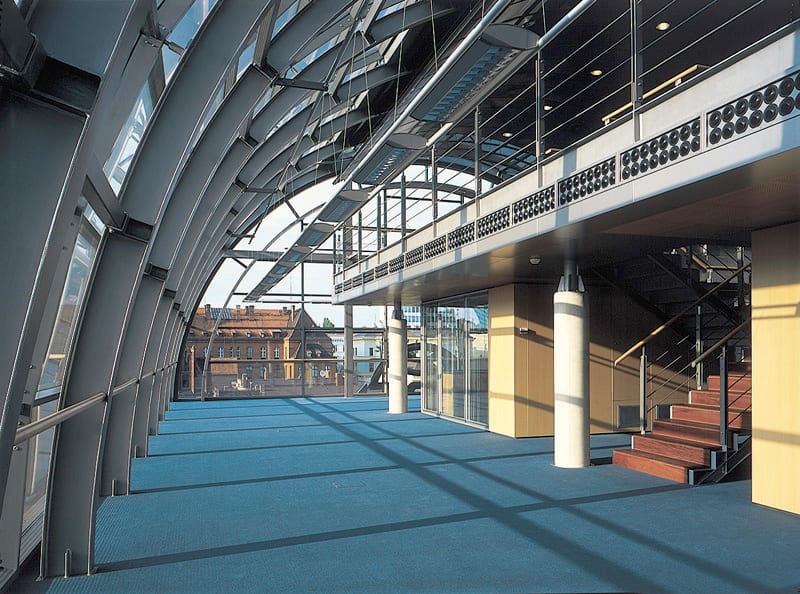
COMPETITIONS: In the reutilization of old, existing sites, what kind of problems do you come up against in terms of remediation?
AB: It varies from factory to factory. In this case it was zero, because the pollution factors didn’t exist. In the case of the steel or petrochemical industries, it’s another matter. There may even be some historical areas where archeological discoveries result in a job stoppage.
COMPETITIONS: Your firm has been participating in a large number of competitions almost every year lately, sometimes as many as 10 or 11 annually. Most firms in western Europe feel they can only afford to do two or three a year financially. How do you manage to do so many?
The majority of our commissions have been the result of competitions we have won. We also see competitions as a form of promotion. We really don’t advertise in any other way. If you jump into the competition and you are focussed in a special way of illustrating your idea, it makes the process easier. We also are on competition juries; so at some point we are also on the other side.
COMPETITIONS: The system did change in France in the early nineties, where the government decided that firms should be compensated for their time if they enter a competition. Thus, you began having a lot of invited competitions where the participants received stipends.
AB: This is the situation which we now find ourselves here with investors. In a very heavy competition with important problems, you require a lot of time for the presentation.
COMPETITIONS: Because of the slow-down in the U.S. economy, you may see a lot of young American architects here soon.
AB: We have had a lot of foreign architects here. In that sense we are not one of your standard offices, we have always had students and international students in the office. Some of them are even staying after their internships here. So besides young Polish architects going abroad, we have our share here: German, Austrian, Italian, and now a Canadian. And somebody from Columbia is coming here also. This experience somehow builds in your consciousness, and you never know when an idea will surface because of it.
COMPETITIONS: I notice that around Warsaw there is already a trend to build housing out at the edge, much like American suburbia. Will rising oil prices here also make people think twice about living so far from the center of activity?
AB: The suburbia issue is being discussed in Warsaw. This model of living well outside of the city isn’t working. You have to build all that infrastructure. Besides that, people are spending two hours in their cars just commuting to work and back. In addition, you become a taxi driver for your children.
We are usually avoiding housing. One of the reasons is that housing here in Poland is not done within a social context — no thought is given to life within that environment beyond building the units. Contrary to western Europe, South America, and the U.S., there is almost no affordable housing. All the housing being built here now is for the wealthy. Not only that, when the building is done, and you give the keys to the occupant, they immediately start demolition, since each has the option to design the interior of their own flat. Before you know it, the elevators are not working anymore, because they have been used so much by contractors.
COMPETITIONS: If you were looking to do a new building type, what would it be?
AB: We are looking for difficult sites, difficult problems, difficult contexts, and the program is secondary for us. We don’t like to have a project where there is no relationship to the context. Quite often this is modern architecture in a historic context: it’s about contrast and dialogue.
{/reg}




























